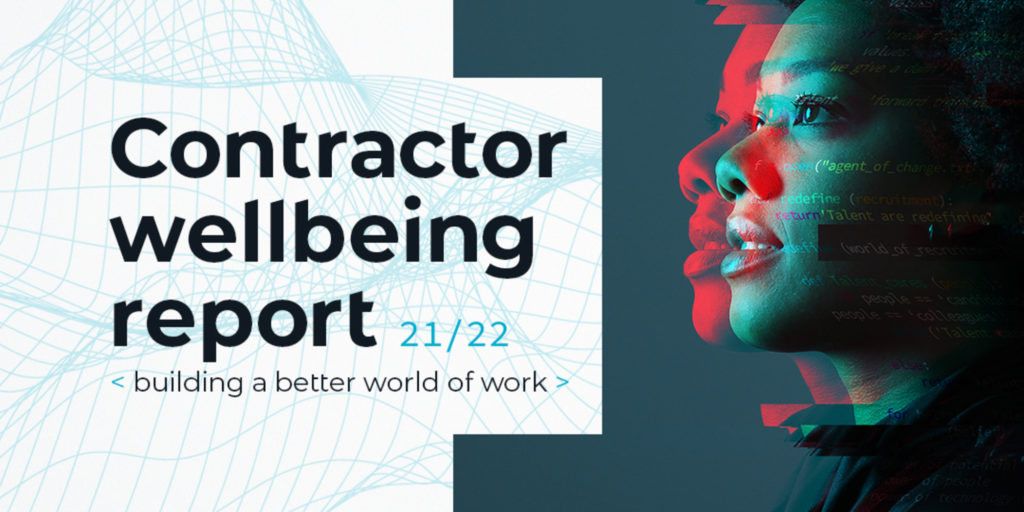
Ignore contractor engagement at your own peril
Ignore contractor engagement at your own peril

In harvardbusinessreview Dan Pink, author of Free Agent Nation and Drive talks about short-term workers: “The relationship is often less fraught, less hierarchical, and doesn’t come with the same expectations,” he explains. “But that doesn’t mean that you can be completely hands off. You still need to actively and thoughtfully manage them so that you can get their best output and ensure they’ll want to work with you again.”
Over the course of 20 years in HR, I have seen many times the relief that hiring a contractor can bring to an employer. No need to worry about their personal struggles, overseas holidays (remember those?), sick leave or general happiness about their roles. Paid by the hour, they’re there to do the job, make our lives easier and move on. When I mention that contractor wellbeing is something that we focus on at Talent, I’ve often heard “Why? I hire contractors so I don’t need to worry about their personal wellbeing!” in response.
However, this is an assumption I would challenge. In fact, I’d argue that it’s just as important to focus on your temporary workers’ engagement as much as your permanent team.
Why is it important to fully include someone who stays for only a few weeks or months? Because this person accomplishes significant work to your company’s operations, extends your strategy, determines the output of your project and can be your best advocate (or biggest detractor!) in a competitive hiring market. People are a company’s most precious asset, and that includes the ones who are only with you for a short time.
So, how do you drive engagement with contractors?
We recently surveyed over 1,700 tech contractors around the world to find out what is most important to them when working for a client. The following tips are based on their direct feedback:
1. Build connection
87% of the contractors we surveyed felt that it was highly important or important to feel connected to their co-workers. Connection is a natural human need, but contractors are often left out of the social aspects of a company’s culture. Creating a sense of connection between your temp and permanent team members can have an enormous impact on the quality of the outcomes you’ll receive. So how do you do this? Here are some of their suggestions:
- “Opportunities to network and socialise”
- “Regular events, virtual connect sessions and in-person meet ups”
- “Training sessions”
- “Access to a forum so we can stay connected”
- “A social media site (like Slack), social events, learning workshops, and/or virtual guest speakers (lunch time sessions).”
2. Instil purpose
Organisations that succeed in making their mission personal to employees see performance that sets them apart. Gallup research shows that just a 10% improvement in employees’ connection with the mission or purpose of their organisation leads to a 4.4% increase in profitability. Yet this is not just limited to permanent staff. In our research, we found that a large number of contractors expect their clients to have a clear purpose or mission in order to feel fulfilled at work. In fact, 86% of the contractors we surveyed said it was important for them to feel connected to the company’s mission or purpose. So how do you do this? Here’s what our survey participants said helped:
- “A sense of knowing my work / contribution is important and valued.”
- “Interesting and challenging work.”
- “Making a significant difference.”
- “Achieving positive change.”
It’s clear that making sure your contractors know and understand the value of their contribution towards a bigger picture purpose can have a hugely valuable impact on their motivation and productivity.
3. Provide them the benefits that really matter to them
Over 50% of the contractors we surveyed said that benefits / perks were highly important or important to them. This is an interesting discovery, as contractors have historically missed out on the usual company-provided goodies. But before rolling out gym memberships to everyone on the project team, take the time to find out what really matters to them – you might find it’s something that won’t panic your CFO.
Our survey participants ranked flexible work hours & remote work the number one benefit an employer could offer them, taking over 75% of the vote. The next top answer was healthcare benefits, which received just 9.39% of votes. The shift to flexible work is here to stay, so accommodating contractors’ desire for flexibility is imperative for businesses who want to attract the very best.
These are just a few ways you can improve life for contractors at your company, however there are many more. I encourage you to read our full report here to learn more.
There’s no doubt that the contractor workforce is growing at a rapid pace, and the competition to attract top temporary talent is fierce. Delivering an exceptional experience for your contractors will have a significant impact on your team productivity, culture and employer brand. A company with strong values will treat every colleague with the same level of respect, no matter how long the person stays
